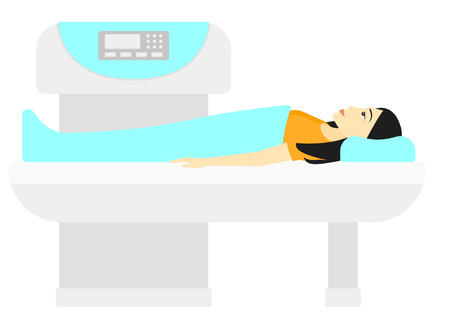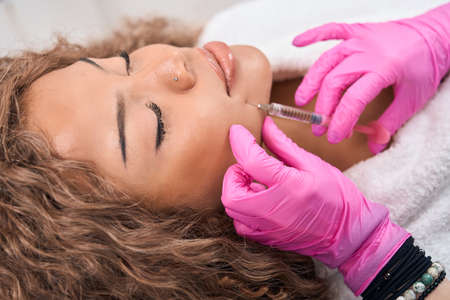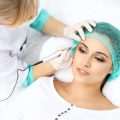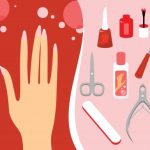1. Understanding Microdermabrasion
If you’re considering your first microdermabrasion session, you might be wondering what exactly this treatment is and why it’s so popular in the United States. Microdermabrasion is a non-invasive skin care procedure that gently exfoliates your skin to help improve its texture, tone, and overall appearance.
What Is Microdermabrasion?
Microdermabrasion uses a special device to remove the outermost layer of dead skin cells from your face. This process reveals fresher, younger-looking skin underneath and helps address common concerns like dullness, uneven texture, and mild acne scars. Unlike chemical peels or more aggressive procedures, microdermabrasion doesn’t require downtime and is often described as feeling like a gentle facial scrub combined with light suction.
How Does It Work?
The treatment is performed by a licensed skincare professional who uses either a diamond-tipped wand or fine crystals to exfoliate your skin. At the same time, a vacuum system removes the exfoliated skin cells and stimulates blood flow to the treated area. The whole process usually takes about 30 to 60 minutes and can be done during a lunch break.
| Aspect | Details |
|---|---|
| Treatment Time | 30–60 minutes |
| Pain Level | Mild to none (feels like gentle scratching) |
| Downtime | No downtime; immediate return to daily activities |
| Best For | Dullness, uneven texture, mild acne scars, fine lines |
Why Is Microdermabrasion Popular in the U.S.?
Many Americans choose microdermabrasion because it offers visible results without significant recovery time or discomfort. It’s also suitable for most skin types and fits easily into busy lifestyles. Whether you want a quick refresh before a big event or are looking for gradual improvement over several sessions, microdermabrasion is considered a safe and effective option for rejuvenating your skin.
2. Pre-Session Preparation
How to Get Your Skin Ready for Microdermabrasion
Before you head to your first microdermabrasion appointment, a little preparation can help you get the best results and reduce the risk of irritation. Here’s what you need to know:
What to Avoid Before Your Session
| Things to Avoid | How Long Before Appointment | Why |
|---|---|---|
| Retinoids (Retin-A, tretinoin, etc.) | 3-5 days | Can make skin more sensitive and prone to redness or peeling. |
| Exfoliating Products (scrubs, acids) | 3 days | Avoid over-exfoliation and irritation. |
| Waxing or Hair Removal Creams | 1 week | Prevents extra sensitivity and potential skin damage. |
| Tanning (natural or spray) | 1 week | Tanned skin is more sensitive and could react poorly. |
| Chemical Peels or Laser Treatments | 2 weeks | Your skin needs time to recover from other treatments. |
| Direct Sun Exposure (no SPF) | Several days before and after | Sunburned skin should not be treated. |
What You Should Do Before Your Appointment
- Cleansing: Wash your face with a gentle cleanser the morning of your session. Avoid harsh scrubbing.
- No Makeup: Arrive with clean, makeup-free skin if possible. This helps your provider assess your natural skin condition.
- Avoid Alcohol: Try not to drink alcohol 24 hours before your session, as it can dehydrate your skin.
- Mention Medications: Let your provider know about any medications or topical creams you’re using, especially acne treatments or antibiotics.
- Sunscreen: Use sunscreen in the days leading up to your appointment to protect your skin barrier.
What to Communicate With Your Provider
- Your Skin Goals: Share what you hope to achieve—whether it’s smoother texture, fewer breakouts, or improved glow.
- Your Skin History: Tell them about any allergies, past reactions, or current conditions like eczema, rosacea, or recent sunburn.
- Sensitivity Level: If you know your skin is easily irritated, let them know so they can adjust the treatment strength.
Your Pre-Session Checklist
- Avoid retinoids, exfoliants, waxing, tanning, and chemical treatments as outlined above.
- Cleansed, makeup-free face on appointment day.
- Sunscreen use in the days before treatment.
This simple prep routine will help you feel confident walking into your first microdermabrasion session and set the stage for great results!

3. The Session Experience
Step-by-Step: What Happens During Your Appointment
Your first microdermabrasion session at an American med spa or dermatology clinic is designed to be comfortable and professional. Here’s what you can expect, step by step:
| Step | What to Expect |
|---|---|
| Check-In | You’ll be greeted by the front desk staff, asked to fill out a brief health history form, and confirm any allergies or skin concerns. |
| Consultation | Your provider—a licensed esthetician or dermatologist—will discuss your skin goals, answer your questions, and explain the process in detail. |
| Preparation | You’ll be shown to a clean treatment room. Your face will be cleansed to remove makeup, oil, and impurities. |
| The Procedure | The provider uses a handheld device that gently exfoliates your skin with tiny crystals or a diamond-tipped wand while suctioning away dead skin cells. You may feel a mild scratching sensation but it shouldn’t hurt. |
| Aftercare Advice | Post-treatment, soothing products like moisturizer or sunscreen are applied. You’ll receive instructions on how to care for your skin over the next few days. |
What Does Microdermabrasion Feel Like?
Most clients describe the procedure as feeling like a light sandpaper moving across the skin or a gentle vacuum sensation. It’s generally painless—some people even find it relaxing. If you ever feel uncomfortable, let your provider know immediately so adjustments can be made.
The Professionalism You Can Expect in American Med Spas and Clinics
American med spas and dermatology clinics take professionalism seriously. You can expect:
- Licensed professionals: Only trained estheticians or board-certified dermatologists perform microdermabrasion.
- Sterile equipment: All tools are sanitized between clients for your safety.
- Respect for privacy: Treatment rooms are private, and providers maintain confidentiality at all times.
- Clear communication: Staff explain each step and check in with you during the procedure to ensure your comfort.
4. Post-Treatment Care and Recovery
After your first microdermabrasion session, it’s normal to notice some changes in your skin. Understanding how to take care of your face after treatment can help you get the best results and avoid irritation.
What to Expect Right After Treatment
Most people experience mild redness, similar to a slight sunburn, right after their session. Your skin might also feel a bit sensitive or tight for a few hours. These effects are temporary and typically fade within 24 to 48 hours.
| Possible Side Effect | How Long It Lasts | What You Can Do |
|---|---|---|
| Redness | Up to 48 hours | Avoid hot showers; use gentle, cool compresses if needed |
| Sensitivity | 1-2 days | Skip harsh products; stick with mild cleansers and moisturizers |
| Mild Flaking | A few days (if any) | Moisturize often; don’t pick at flaking skin |
Best Practices for Aftercare
- Keep your skin hydrated: Use a gentle moisturizer to help restore your skin’s barrier.
- Use sunscreen every day: Your skin will be more sensitive to sunlight after microdermabrasion. Apply broad-spectrum SPF 30+ before going outside, even if it’s cloudy.
- Avoid exfoliating products: Steer clear of scrubs, retinol, and acids for at least a week or as recommended by your provider.
- No picking or scratching: Let any dryness or flakiness resolve naturally to prevent scarring or irritation.
- Hold off on makeup: If possible, avoid wearing makeup for at least 24 hours after your treatment.
- Stay away from heat: Skip saunas, hot tubs, and vigorous workouts for a day or two while your skin recovers.
If You Notice Anything Unusual
If you have severe redness that doesn’t go away, swelling, blistering, or signs of infection, contact your skincare provider right away for advice.
5. Results and Follow-Up Recommendations
After your first microdermabrasion session, you may notice that your skin feels smoother and looks a bit brighter right away. However, the full benefits usually become more noticeable after a few days as any mild redness fades and your skin continues to heal. For most people in the U.S., visible improvements such as softer texture and a more even tone can be seen within 1 to 2 weeks.
When Will You See Results?
| Timeframe | What to Expect |
|---|---|
| Immediately After Session | Smoother skin, mild redness (similar to a light sunburn) |
| Within 24-48 Hours | Redness fades, skin feels refreshed and softer |
| 1-2 Weeks | Noticeable glow, more even skin tone and texture |
How to Maintain Your Results
To help your skin stay looking its best after microdermabrasion, it’s important to follow some simple care tips:
- Hydrate: Drink plenty of water and use a gentle moisturizer daily.
- Protect Your Skin: Apply sunscreen with at least SPF 30 every day, even if you’re indoors or it’s cloudy.
- Avoid Harsh Products: Stay away from exfoliants or products containing retinol for about a week after treatment.
- Be Gentle: Don’t scrub or pick at your skin—let it heal naturally.
Recommendations for Future Sessions (U.S. Standards)
Most dermatologists and skincare professionals in the U.S. recommend scheduling microdermabrasion sessions every 4 to 6 weeks to maintain optimal results. The exact frequency depends on your skin type, personal goals, and how your skin responds to the treatment. Your provider will give you personalized advice based on your progress.
Typical Microdermabrasion Schedule
| Skin Concern | Recommended Frequency |
|---|---|
| Mild Texture/Glow Boost | Every 4-6 weeks |
| Acne Scarring/Pigmentation Issues | Every 2-4 weeks (initially), then maintenance every 4-6 weeks |
| Sensitive Skin/First Timers | Start with once every 6 weeks and adjust as needed |
Your Next Steps
If you have questions about your results or when to schedule your next appointment, don’t hesitate to reach out to your provider. Regular sessions and good skincare habits will help you enjoy smooth, glowing skin long-term.


